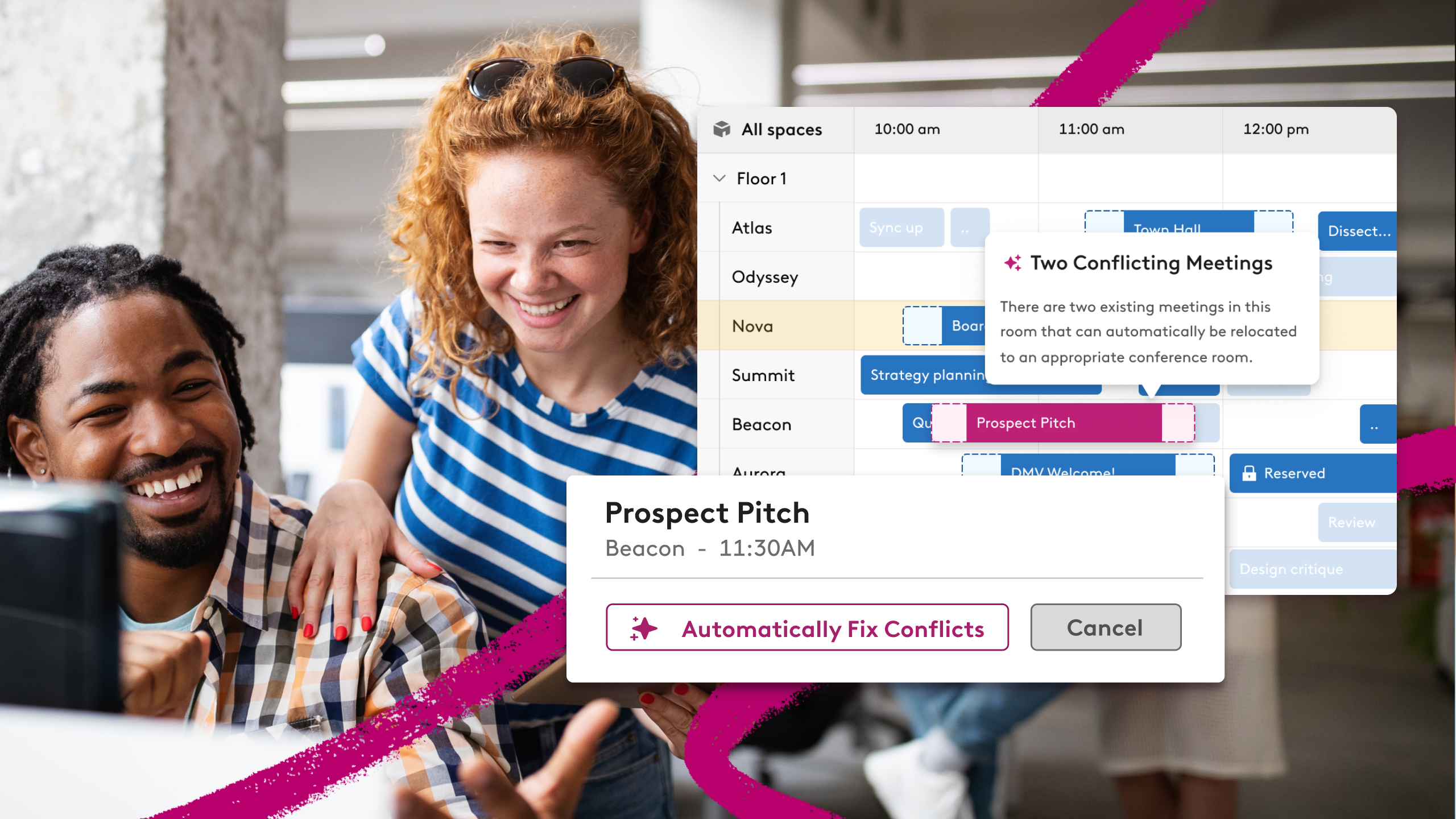Key terms to know: Hybrid work
Hybrid work is a flexible approach to work that supports a blend of in-office and remote work. Here are some key terms you should know about this workplace strategy.

Activity-based scheduling
As part of an activity-based workplace, employees plan their days around the activities they need to get done that day and the spaces that best support those specific activities. With activity-based scheduling, employees can see what space is available based on the activity they plan to complete on a given day.
Activity-based work (ABW)
Refers to creating a flexible environment for employees in an office setting, recognizing that certain activities require specific settings, giving employees the freedom to choose when, where, and how they work. Companies provide employees with a choice of office settings for a variety of tasks and activities throughout the workday.
Coworking
When a company isn't large enough to warrant an entire office, they can use a coworking space to be in a productive environment without breaking the bank. Alternatively, established organizations can use coworking spaces to either house a remote-based workforce or as a spillover space for company events or during periods of high personnel growth.
Distributed team
Distributed teams are made up of employees working in a variety of different locations. Most often, distributed teams consist of a group of remote workers dotted in different cities or countries. Sometimes, distributed teams also include employees who work in an office as well as remote team members.
Flex employee
Employees who spend between 20 - 60% of the time at an assigned desk or anywhere from 1.5 - 5 hours each day. These roles often have a variety of activities throughout the day ranging from travel to meetings to focused time.
Flex space
Settings throughout the office designed to support particular employee activities and meet the needs of different styles of work. Examples include long, high top tables for collaborative work, enclosed phone booths for focus work or private phone calls, and lounge areas with couches for casual conversation.
Flexible work environment
Instituting principles like activity-based work and adding different space types (i.e. lounges, cafes, phone booths, huddle rooms) allow employees to move around the office more freely based on what they're working on at any given moment. Practices like hot desking give people the option to choose where they want to hunker down for the day, or hour, giving them the autonomy to work from wherever.
Flexible work policy
A piece of a workplace strategy unique to every company which outlines the terms around flexible working for its employees. Building out a flexible work policy requires a solid understanding of how your employees work, what types of environments they prefer, and what resources enable them to be their most productive. Gathering feedback directly from your people is a great place to start.
Flexible work schedule
A rigid 9am–5pm schedule doesn’t always make the most sense for all people. Many organizations have adopted flexible work schedules for employees who don’t need to be in the office for 8 hours straight to do their job well. Oftentimes, this can look like coming into the office early and leaving early or coming in later and staying later. Flexible work schedules are especially beneficial for working parents or employees with additional responsibilities.
Flexible work vs. Flexible workplace
Though often talked about in tandem, flexible work and a flexible workplace (often called a flexible work environment) are two unique phenomena of modern work. Flexible work is a massive umbrella term used to address anything that falls outside the bounds of a strict 9-5 job conducted in a uniform workplace. A flexible workplace, on the other hand, speaks specifically to the physical workplace and how work is completed within its four walls.
Flexible working
Encompasses the concept of allowing employees flexibility in the office to do work with minimum constraints. Employees have the power to choose when, how and where they work. Flex spaces around the office are designed to meet the needs of those different styles of work and give freedom to employees to move throughout the office. Agile/flexible work can include but isn’t limited to activity-based working principles, the elastic office, hot desking, flex/huddle zones and more. Can also be referred to as "agile working"
Hybrid team
Made up of a mix of employees working both in a central office and remotely, hybrid teams are the best example of organizations providing flexibility for their employees to “work from anywhere”. With a hybrid team, employees can choose when and where they work depending on their responsibilities and personal preferences.
Open office plan
An office layout created to allow for more organization-wide transparency and ad-hoc collaboration amongst employees. Some open office plans include a variety of flexible workspaces enabling activity-based working. Other open office plans consist of uniform benches or rows of desks and little flexibility, sometimes also referred to as an open plan office.
Remote work
Also often referred to as "mobile work" or "telecommunication", remote work is when employees primarily work in either a home office, coworking solution, or other work settings. Remote work has become more popular as technology has improved -- devices have become more portable and technology like video conferencing software and online collaboration tools make remote work easy.
Third places
Refers to areas that rest between "home" and "workplace" on the spectrum of spaces an employee finds themselves during a normal day. Thirdspaces, like cafes, parks and lounges, are being leveraged in office design to help create a more sense of belonging in the workplace. Also called "third spaces".
Work from anywhere
A popular trend where organizations offer employees the choice to work when, how, and where they want. “Working from anywhere” could entail working part-time in an office setting, working completely remotely, or a combination of the two.
Work from home
A form of remote work where employees work from their own home. Working from home is often used as a supplemental work environment for employees who typically work in the office as part of a more flexible schedule. However, some remote employees work exclusively in their own home office.




